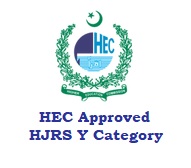Anti-inflammatory and anti-oxidative activities of andrographolide determined using atherosclerosis induced mice
DOI:
https://doi.org/10.47264/idea.nasij/5.1.10Keywords:
Anti-inflammatory, Anti-oxidative, Andrographolide, Atherosclerosis, C57BL/6J mice, Atherosclerosis induction, P-407, Biomarkers, Reactive oxygen speciesAbstract
Atherosclerosis and relative cardiovascular complications remain the main reasons for death worldwide. This study stimulated atherosclerosis in C57BL/6J mice using P-407 via intraperitoneal injection, and treatment with Andrographolide (AGP) (15, 30 and 45 mg/kg BW) was carried out for six weeks. The heart and aorta were harvested after six weeks and assessed using Enzyme-Linked Immunosorbent Assay (ELISA) and histological studies. The results demonstrated that the treatment with AGP reversed the effects of P-407 induced atherosclerosis. The doses of AGP correlated with the reduction of atherosclerosis biomarkers, and a high dose (45 mg/kg BW) was the most significant dose. The Low-Density Lipoprotein (LDL), Triglycerides (TG), and Atherogenic Index (AI) were significantly reduced by the AGP treatment. The histological results showed a reduction in inflammation, fibrosis and hypertrophy in the heart tissues of the groups treated with AGP compared to the disease control. In addition, AGP treatment significantly decreased Reactive Oxygen Species (ROS) and the inflammation marker (NF-kB). Furthermore, the AGP-treated groups showed typical morphological characteristics of the aorta, while the disease control cells were highly affected. The results demonstrated that AGP is highly recommended as a natural treatment to reduce the symptoms of atherosclerosis by reducing oxidative stress and inflammation.
References
Adibi, P., Sadeghi, M., Mahsa, M., Rozati, G., & Mohseni, M. (2007). Prediction of coronary atherosclerotic disease with liver transaminase level. Liver International, 27(7), 895–900. https://doi.org/10.1111/j.1478-3231.2007.01545.x
Al Batran, R., Al-Bayaty, F., Al-Obaidi, M. M. J., & Abdulla, M. A. (2013). Acute toxicity and the effect of andrographolide on porphyromonas gingivalis-induced hyperlipidemia in rats. BioMed Research International, 2013. https://doi.org/10.1155/2013/594012
Andrés-Manzano, M. J., Andrés, V., & Dorado, B. (2015). Oil red O and hematoxylin and eosin staining for quantification of atherosclerosis burden in mouse aorta and aortic root. Methods in Mouse Atherosclerosis, 85–99. https://link.springer.com/protocol/10.1007/978-1-4939-2929-0_5
Assmann, G., & GottoJr, A. M. (2004). HDL cholesterol and protective factors in atherosclerosis. Circulation, 109(23_suppl_1), III–8. https://doi.org/10.1161/01.CIR.0000131512.50667.46
Azlan, A., Younis, L., Mahmud, N. H., & Dardiri, N. A. (2013). Mechanism of action of Andrographis paniculata as anti atherosclerotic agent. European International J. Sci. Tech, 2(2), 1–6.
Barter, P. (2005). The role of HDL-cholesterol in preventing atherosclerotic disease. European Heart Journal Supplements, 7(suppl_F), F4–F8. https://doi.org/10.1093/eurheartj/sui036
Bauman, T. M., Nicholson, T. M., Abler, L. L., Eliceiri, K. W., Huang, W., Vezina, C. M., & Ricke, W. A. (2014). Characterization of fibrillar collagens and extracellular matrix of glandular benign prostatic hyperplasia nodules. PLoS One, 9(10), e109102. https://journals.plos.org/plosone/article?id=10.1371/journal.pone.0109102
Bonomini, F., Tengattini, S., Fabiano, A., Bianchi, R., & Rezzani, R. (2008). Atherosclerosis and oxidative stress. Histology and Histopathology, 23(3). https://digitum.um.es/digitum/handle/10201/29669
Chandrasekaran, C. V., Gupta, A., & Agarwal, A. (2010). Effect of an extract of Andrographis paniculata leaves on inflammatory and allergic mediators in vitro. Journal of Ethnopharmacology, 129(2), 203–207. https://doi.org/10.1016/j.jep.2010.03.007
Chandrasekaran, C. V., Thiyagarajan, P., Deepak, H. B., & Agarwal, A. (2011). In vitro modulation of LPS/calcimycin induced inflammatory and allergic mediators by pure compounds of Andrographis paniculata (King of bitters) extract. International Immunopharmacology, 11(1), 79–84. https://doi.org/10.1016/j.intimp.2010.10.009
Cheon, S. Y., Chung, K. S., Jeon, E., Nugroho, A., Park, H. J., & An, H. J. (2015). Anti-inflammatory activity of saxifragin via inhibition of NF-kB involves caspase-1 activation. Journal of Natural Products, 78(7), 1579–1585. https://pubs.acs.org/doi/abs/10.1021/acs.jnatprod.5b00145
Dhanalakshmi, S., Agarwal, R., & Agarwal, C. (2003). Inhibition of NF-?B pathway in grape seed extract-induced apoptotic death of human prostate carcinoma DU145 cells. International Journal of Oncology, 23(3), 721–727. https://www.spandidos-publications.com/10.3892/ijo.23.3.721
Dhandapani, R. (2007). Hypolipidemic activity of Eclipta prostrata (L.) L. leaf extract in atherogenic diet induced hyperlipidemic rats. Indian Journal of Experimental Biology, 45(7), 617–619.
Friedewald, W. T., Levy, R. I., & Fredrickson, D. S. (1972). Estimation of the concentration of low-density lipoprotein cholesterol in plasma, without use of the preparative ultracentrifuge. Clinical Chemistry, 18(6), 499–502. https://doi.org/10.1093/clinchem/18.6.499
Go, A. S., Mozaffarian, D., Roger, V. L., Benjamin, E. J., Berry, J. D., Borden, W. B., ... & Turner, M. B. (2013). Heart disease and stroke statistics—2013 update: a report from the American Heart Association. Circulation, 127(1), e6–e245. https://www.ahajournals.org/doi/full/10.1161/CIR.0b013e31828124ad
Horváth, E., Hu?anu, A., Chiriac, L., Dobreanu, M., Or?dan, A., & Nagy, E. E. (2018). Ischemic damage and early inflammatory infiltration are different in the core and penumbra lesions of rat brain after transient focal cerebral ischemia. Journal of Neuroimmunology, 324, 35–42. https://doi.org/10.1016/j.jneuroim.2018.08.002
Kim, S., Bando, Y., Chang, C., Kwon, J., Tarverti, B., Kim, D., ... & Park, N. H. (2022). Topical application of Porphyromonas gingivalis into the gingival pocket in mice leads to chronic active infection, periodontitis and systemic inflammation. International Journal of Molecular Medicine, 50(2), 1–14. https://www.spandidos-publications.com/10.3892/ijmm.2022.5159
Korolenko, T. A., Johnston, T. P., Tuzikov, F. V., Tuzikova, N. A., Pupyshev, A. B., Spiridonov, V. K., ... & Zhukova, N. A. (2016). Early-stage atherosclerosis in poloxamer 407-induced hyperlipidemic mice: pathological features and changes in the lipid composition of serum lipoprotein fractions and sub fractions. Lipids in Health and Disease, 15, 1–13. https://link.springer.com/article/10.1186/s12944-016-0186-7
Lama, A., & Saikia, H. (2013). Effects of Emblica Officinalis (AMLA) on serum lipids and atherogenesis in Albino Rats fed with high fat diet. International Journal of Pharma and Bio Sciences, 6(3B), 362–372.
Lim, J. C. W., Chan, T. K., Ng, D. S., Sagineedu, S. R., Stanslas, J., & Wong, W. F. (2012). Andrographolide and its analogues: versatile bioactive molecules for combating inflammation and cancer. Clinical and Experimental Pharmacology and Physiology, 39(3), 300–310. https://doi.org/10.1111/j.1440-1681.2011.05633.x
Low, M., Khoo, C. S., Münch, G., Govindaraghavan, S., & Sucher, N. J. (2015). An in vitro study of anti-inflammatory activity of standardised Andrographis paniculata extracts and pure andrographolide. BMC Complementary and Alternative Medicine, 15, 1–9. https://link.springer.com/article/10.1186/s12906-015-0525-7
Lugrin, J., Rosenblatt-Velin, N., Parapanov, R., & Liaudet, L. (2014). The role of oxidative stress during inflammatory processes. Biological Chemistry, 395(2), 203–230. https://www.degruyter.com/document/doi/10.1515/hsz-2013-0241/html
Monaco, C., Andreakos, E., Kiriakidis, S., Mauri, C., Bicknell, C., Foxwell, B., ... & Feldmann, M. (2004). Canonical pathway of nuclear factor kB activation selectively regulates proinflammatory and prothrombotic responses in human atherosclerosis. Proceedings of the National Academy of Sciences, 101(15), 5634–5639. https://doi.org/10.1073/pnas.0401060101
Myou, S., Leff, A. R., Myo, S., Boetticher, E., Tong, J., Meliton, A. Y., ... & Zhu, X. (2003). Blockade of inflammation and airway hyperresponsiveness in immune-sensitized mice by dominant-negative phosphoinositide 3-kinase–TAT. The Journal of experimental Medicine, 198(10), 1573–1582. https://doi.org/10.1084/jem.20030298
Okhuarobo, A., Falodun, J. E., Erharuyi, O., Imieje, V., Falodun, A., & Langer, P. (2014). Harnessing the medicinal properties of Andrographis paniculata for diseases and beyond: a review of its phytochemistry and pharmacology. Asian Pacific Journal of Tropical Disease, 4(3), 213–222. https://doi.org/10.1016/S2222-1808(14)60509-0
Palmer, W. K., Emeson, E. E., & Johnston, T. P. (1998). Poloxamer 407-induced atherogenesis in the C57BL/6 mouse. Atherosclerosis, 136(1), 115–123. https://doi.org/10.1016/S0021-9150(97)00193-7
Pateras, I., Giaginis, C., Tsigris, C., Patsouris, E., & Theocharis, S. (2014). NF-?B signaling at the crossroads of inflammation and atherogenesis: searching for new therapeutic links. Expert Opinion on Therapeutic Targets, 18(9), 1089–1101.? https://doi.org/10.1517/14728222.2014.938051
Pirmohamed, M., James, S., Meakin, S., Green, C., Scott, A. K., Walley, T. J., ... & Breckenridge, A. M. (2004). Adverse drug reactions as cause of admission to hospital: prospective analysis of 18 820 patients. BMJ, 329(7456), 15–19.? https://doi.org/10.1155/2012/785946
Popa, C. D., Arts, E., Fransen, J., & van Riel, P. L. (2012). Atherogenic index and high-density lipoprotein cholesterol as cardiovascular risk determinants in rheumatoid arthritis: the impact of therapy with biologicals. Mediators of Inflammation, 2012, 785946. https://doi.org/10.1155/2012/785946
Reyes-Soffer, G., Ginsberg, H. N., Berglund, L., Duell, P. B., Heffron, S. P., Kamstrup, P. R. (2022). American Heart Association Council on Arteriosclerosis, Thrombosis and Vascular Biology; Council on Cardiovascular Radiology and Intervention; and Council on Peripheral Vascular Disease. Lipoprotein (a): a genetically determined, causal, and prevalent risk factor for atherosclerotic cardiovascular disease: a scientific statement from the American Heart Association. Arteriosclerosis, Thrombosis, and Vascular Biology, 42(1), e48–e60. https://www.ahajournals.org/doi/full/10.1161/ATV.0000000000000147
Sadagurski, M., Cheng, Z., Rozzo, A., Palazzolo, I., Kelley, G. R., Dong, X., ... & White, M. F. (2011). IRS2 increases mitochondrial dysfunction and oxidative stress in a mouse model of Huntington disease. The Journal of Clinical Investigation, 121(10), 4070–4081.? https://www.jci.org/articles/view/46305
Su, X., Guo, H., Zhou, Y., Cao, A., Shen, Q., Zhu, B., ... & Wang, L. (2023). Astragaloside IV attenuates high glucose-induced NF-kB-mediated inflammation through activation of PI3K/AKT-ERK-dependent Nrf2/ARE signaling pathway in glomerular mesangial cells. Phytotherapy Research, 37(9), 4133–4148. https://doi.org/10.1002/ptr.7875
Tran, T. V. A., Malainer, C., Schwaiger, S., Hung, T., Atanasov, A. G., Heiss, E. H., ... & Stuppner, H. (2015). Screening of Vietnamese medicinal plants for NF-kB signaling inhibitors: assessing the activity of flavonoids from the stem bark of Oroxylum indicum. Journal of Ethnopharmacology, 159, 36–42. https://doi.org/10.1016/j.jep.2014.10.012
Venuraju, S. M., Yerramasu, A., Corder, R., & Lahiri, A. (2010). Osteoprotegerin as a predictor of coronary artery disease and cardiovascular mortality and morbidity. Journal of the American College of Cardiology, 55(19), 2049–2061. https://doi.org/10.1016/j.jacc.2010.03.013
Vujovic, A., Kotur-Stevuljevic, J., Spasic, S., Bujisic, N., Martinovic, J., Vujovic, M., ... & Pajic, D. (2010). Evaluation of different formulas for LDL-C calculation. Lipids in Health and Disease, 9, 1–9. https://link.springer.com/article/10.1186/1476-511X-9-27
Yang, J. C. S., Lin, M. W., Rau, C. S., Jeng, S. F., Lu, T. H., Wu, Y. C., ... & Hsieh, C. H. (2015). Altered exosomal protein expression in the serum of NF-?B knockout mice following skeletal muscle ischemia-reperfusion injury. Journal of Biomedical Science, 22, 1–9. https://link.springer.com/article/10.1186/s12929-015-0147-x
Downloads
Published
Issue
Section
License
Copyright (c) 2024 Yousef Abdulsamie Aween, Punniyakoti Veeraveedu Thanikachalam, Mallikarjuna Rao Pichika, Sagineedu Sreenivasa Rao, Belal J. Muhialdin

This work is licensed under a Creative Commons Attribution 4.0 International License.
Please click here for details about the Licensing and Copyright policies of NASIJ.








